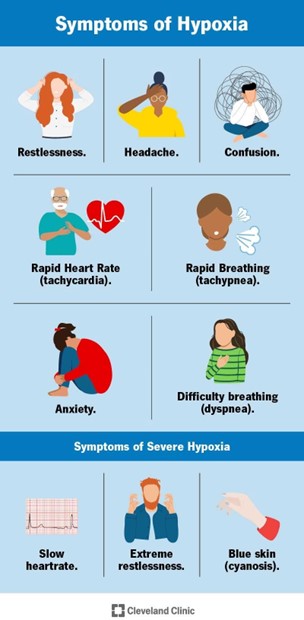A nurse is assessing a client with panic disorder.
Which statement by the nurse would be appropriate during the assessment?
"Tell me about your coping strategies and support system.".
"How often do you experience panic attacks and what triggers them?".
"What medications are you currently taking for your panic disorder?".
"Have you ever had any laboratory tests done for your panic disorder?".
The Correct Answer is A
Choice A rationale:
"Tell me about your coping strategies and support system." This is an appropriate statement during the assessment of a client with panic disorder. Understanding the client's coping mechanisms and support system can help the nurse tailor the care plan to the client's specific needs and strengths.
Choice B rationale:
"How often do you experience panic attacks and what triggers them?" While this question may be relevant, it focuses primarily on the frequency and triggers of panic attacks. While this information is important, it doesn't address coping strategies or support systems, which are equally important aspects of the assessment.
Choice C rationale:
"What medications are you currently taking for your panic disorder?" This question is essential for medication management but does not directly address coping strategies or support systems, which are more pertinent to the assessment in this context.
Choice D rationale:
"Have you ever had any laboratory tests done for your panic disorder?" This question is not relevant to the assessment of panic disorder. Panic disorder is primarily diagnosed based on clinical criteria and does not require specific laboratory tests.
Nursing Test Bank
Naxlex Comprehensive Predictor Exams
Related Questions
Correct Answer is B
Explanation
Choice A rationale:
Decreasing expiratory flow time is not the appropriate intervention in this case. The client's pH and PaCO2 levels suggest respiratory acidosis, which indicates inadequate ventilation. Increasing expiratory flow time might exacerbate the acidosis by reducing ventilation.
Choice C rationale:
Increasing the rate of ventilation (respiratory rate) is a potential intervention to improve the client's acid-base balance. However, it should be done cautiously and under medical supervision to avoid respiratory alkalosis. It is not the first-line intervention in this scenario.
Choice D rationale:
Increasing the ventilator tidal volume may help improve ventilation, but it should also be done under medical guidance to prevent barotrauma. It is not the initial intervention to address the client's respiratory acidosis.
Correct Answer is ["A","E"]
Explanation
The level of hypoxemia that the child may have experienced during the submersion depends on several factors, but the most important ones are:
- The **temperature of water**: Cold water can induce a diving reflex, which lowers the heart rate and oxygen consumption, and may protect the brain from hypoxic injury. Cold water can also cause laryngospasm, which prevents water aspiration but also impairs gas exchange.
- The **amount of time the child was submerged**: The longer the submersion, the more severe the hypoxemia and the higher the risk of brain damage and death. The survival rate decreases significantly after 5 minutes of submersion.
The other factors are less relevant or not directly related to the level of hypoxemia:
- The **weight of the child**: This may affect the buoyancy and the ability to float or swim, but not the oxygen consumption or gas exchange during submersion.
- The **oxygen concentration of the ambient air**: This may affect the pre-submersion oxygen saturation, but not the rate of oxygen depletion or gas exchange during submersion.
- The **witnessing of the fall into the pool**: This may affect the time to rescue and resuscitation, but not the level of hypoxemia during submersion.

Whether you are a student looking to ace your exams or a practicing nurse seeking to enhance your expertise , our nursing education contents will empower you with the confidence and competence to make a difference in the lives of patients and become a respected leader in the healthcare field.
Visit Naxlex, invest in your future and unlock endless possibilities with our unparalleled nursing education contents today
Report Wrong Answer on the Current Question
Do you disagree with the answer? If yes, what is your expected answer? Explain.
Kindly be descriptive with the issue you are facing.
